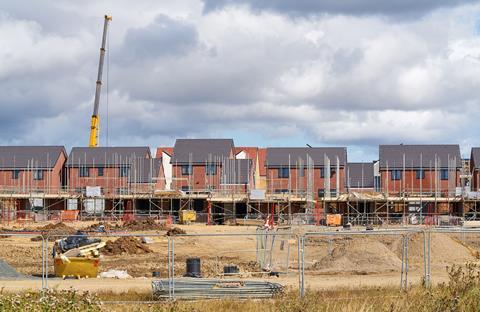Details of proposed Infrastructure Levy emerge as government publishes Levelling Up and Regeneration Bill
The government’s proposed new Infrastructure Levy is to be based on the final gross development value of a scheme, according to details of the policy contained in the Levelling Up and Regeneration Bill, published this lunchtime.
Explanatory notes to the Bill, published on the Houses of Parliament website made clear that the legal underpinning of the Infrastructure Levy (IL) will be based almost entirely on the existing legislation underpinning the working of the Community Infrastructure Levy (CIL), with the “powers required to operate IL […] substantially similar to those that exist for CIL”.

However, it said that while CIL was charged by local authorities on the basis of the floorspace of development created when permission is granted, the government “currently intended that IL will be charged based on the final gross development value of development”.
A final decision has yet to be made, however, and the explanatory notes to the bill said the exact method of charging the levy will be set in regulations.
The bill confirms the government’s intention that the newlLevy will apply in every authority, unlike CIL, and ultimately replace the operation of CIL. The legislation makes an exception for the Mayoral CIL in London, which will be permitted to continue alongside the levy.
The introduction of the levy will be staggered, the explanatory notes said, with a “test and learn” approach adopted to its roll out. The housing secretary will set different dates for different local authorities to issue levy charging schedules, with the aim being this allows “a staggered roll out of IL, so that IL regulations can be informed by how IL works in practice.
Homes permitted under the existing system and liable for Section 106 or CIL payments will continue to make payments as before.
More on the Queen’s Speech 2022
Superfluous and unconvincing: why the levelling up bill is a missed opportunity
The Queen’s Speech shows the government in full retreat on planning reform
Environmental assessment shake up included in planning reforms
Queen’s Speech 2022 at a glance
Fears Queen’s Speech means death of hoped-for planning reforms
The explanatory notes said the bill specifies the levy “must be spent to support the development of an area by funding the provision, improvement, replacement, operation or maintenance of infrastructure, or for any other purpose specified in regulations.”
Some in the development industry have welcomed the intention to replace Section 106 agreement and CIL with an Infrastructure Levy, however, there are widespread concerns over how it will work in practice.
A document published by the government alongside the Bill specified that Levy rates and minimum thresholds will be set and collected locally, with local authorities will be able to set different rates within their area.
The document also made clear that despite much speculation that negotiated Section 106 agreements will be abolished, they will be retained, and will continue to be used instead of the levy for the “largest” schemes.
The document did not define what schemes would be covered by the term “largest”, but said that a retained role for Section 106 agreements here would mean “infrastructure will be able to be provided in-kind and negotiated, but with the guarantee that the value of what is agreed will be no less than will be paid through the Levy.”
The new system will also require developers to deliver infrastructure seen as “integral to the operation and physical design of a site” – such as on site play areas or flood risk mitigation, with “narrowly targeted” section 106 agreements again the vehicle, alongside the Levy, to make sure this type of infrastructure is delivered.
In order that local authorities will continue to be able to get developers to deliver affordable housing on site, the system will include a new non-negotiable “right to require” under which councils will “determine the portion of the levy they receive in-kind as onsite affordable homes.”
Alongside the Levy provisions, the Bill also includes provisions to introduce street votes into local areas, strengthen neighbourhood planning, and update the use of variation applications.
The Bill includes very few if any of the measures in the original 2020 Planning White Paper designed to increase the delivery of housing.











No comments yet